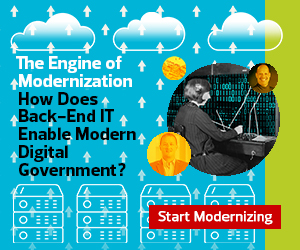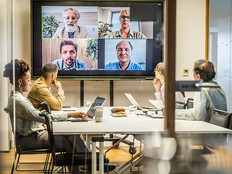Crispino says for small departments like his, the upfront investment put into upgrading infrastructure may sound expensive or seem like a lot of effort.
“But in the grand scheme of things, you will be saving copious amounts of time for yourself,” he says. “Especially during the pandemic situation, we could have spent all our time for two weeks rolling out 100 laptops. The virtual desktop infrastructure really saved time and effort in preparing everyone.”
While the virtual desktop infrastructure enables employees to work remotely today, it also helps the city be prepared for any future emergency. “I think back to that tornado emergency operations center we wanted to set up quickly. We’re now better prepared to do all that,” Crispino says. “If they came to me now and asked me to get 10 computers set up by the end of the day, I would say OK, no problem. I could quickly spin up 10 computers and get them deployed.”
RELATED: How did agencies move quickly to support telework amid the pandemic?
San Antonio Strengthens Continuity of Operations
Before the pandemic, the city of San Antonio had begun to offer employees remote access, but it could only handle about 50 active connections at one time. John Rodriguez, assistant IT director for infrastructure and operations, says partnerships with Cisco and VMware were critical to ramping up when the pandemic struck in 2020.
“We built out our VPN environment from a site that can handle only about 100 VPN users to one that can handle 10,000,” Rodriguez says. “Every year, we have about $5 million in budget to replace legacy equipment. Last year, as we were getting ready to spend that budget, Cisco gave us a fantastic deal: an additional 32 high-end chassis servers with a terabyte of memory. Within about five weeks, we also expanded into a new VMware Workspace environment.”
The city’s IT department set up a separate 10-person team dedicated to work-from-home issues. This team, comprising experts in VPN, VMware Workspace ONE, e-mail and business applications, made a huge difference in resolving problems and improving training material.
“The learning curve for a lot of people working from home was not very significant,” Rodriguez says. “However, for those people who did need assistance, we were able to provide it fairly quickly and get them running.”
Rodriguez says the city today has strengthened continuity of operations.
“As our CTO says, ‘Never let a good calamity go to waste.’ We’re in a much better position for remote work. When we suffered a recent ice storm, people who got power back could work from home and didn’t have to drive in. The pandemic helped us. We now think about remote work in a very meaningful way,” he says.














